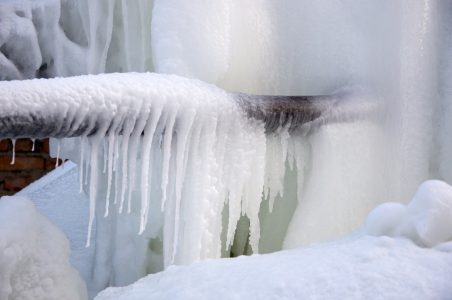Key Approaches for Preventing Frozen Pipes in Winter
Request Free EstimateEach person will have their own opinion when it comes to How to Prevent Your Pipes From Freezing.

Cold weather can ruin your plumbing, specifically by freezing pipelines. Right here's how to prevent it from taking place and what to do if it does.
Introduction
As temperatures decline, the risk of frozen pipes rises, possibly leading to expensive repair services and water damages. Recognizing exactly how to avoid frozen pipelines is essential for house owners in chilly climates.
Avoidance Tips
Shielding vulnerable pipelines
Cover pipelines in insulation sleeves or make use of heat tape to protect them from freezing temperatures. Concentrate on pipelines in unheated or external locations of the home.
Home heating strategies
Maintain indoor areas adequately heated, particularly locations with plumbing. Open up cabinet doors to allow cozy air to flow around pipelines under sinks.
How to identify frozen pipelines
Try to find decreased water circulation from taps, unusual odors or noises from pipes, and noticeable frost on subjected pipelines.
Long-Term Solutions
Architectural modifications
Consider rerouting pipes away from outside walls or unheated areas. Add added insulation to attic rooms, cellars, and crawl spaces.
Upgrading insulation
Invest in high-grade insulation for pipes, attic rooms, and walls. Appropriate insulation aids maintain consistent temperature levels and decreases the danger of frozen pipelines.
Safeguarding Outdoor Pipes
Yard tubes and outdoor faucets
Detach and drain yard tubes before winter. Install frost-proof spigots or cover exterior faucets with shielded caps.
Comprehending Icy Pipes
What triggers pipes to freeze?
Pipelines freeze when exposed to temperatures below 32 ° F (0 ° C) for extended durations. As water inside the pipes ices up, it increases, taxing the pipe walls and possibly causing them to break.
Risks and damages
Icy pipelines can cause water system interruptions, home damages, and costly repair work. Burst pipelines can flooding homes and cause comprehensive structural damage.
Indicators of Frozen Pipes
Determining frozen pipes early can avoid them from rupturing.
What to Do If Your Pipes Freeze
Immediate actions to take
If you presume frozen pipes, keep faucets open up to relieve pressure as the ice melts. Make use of a hairdryer or towels soaked in warm water to thaw pipelines slowly.
Conclusion
Preventing frozen pipelines calls for proactive procedures and quick actions. By understanding the causes, indicators, and preventive measures, property owners can shield their pipes throughout winter.
6 Proven Ways to Prevent Frozen Pipes and Protect Your Home
Disconnect and Drain Garden Hoses
Before winter arrives, start by disconnecting your garden hoses and draining any remaining water. Close the shut-off valves that supply outdoor hose bibs and leave the outdoor faucet open to allow any residual water to drain. For extra protection, consider using faucet covers throughout the colder months. It’s also important to drain water from any sprinkler supply lines following the manufacturer’s directions.
Insulate Exposed Pipes
Insulating your pipes is an effective way to prevent freezing. Pipe insulation is readily available at home improvement stores and is relatively inexpensive. Pay close attention to pipes in unheated areas such as the attic, basement, crawl spaces, or garage. Apply foam insulation generously to create a buffer against the cold. You can also wrap your pipes in heat tape or thermostat-controlled heat cables for added warmth.
Seal Air Leaks
Inspect your home for any cracks or openings that could let in cold air. Seal any holes around the piping in interior or exterior walls, as well as the sill plates where your home rests on its foundation. Additionally, make sure to keep your garage door closed unless you’re entering or exiting. Leaving it open creates a significant air leak that can lead to frozen pipes.
Allow Warm Air Circulation
During cold snaps, it’s essential to allow warm air to circulate evenly throughout your home. Leave interior doors ajar to promote better airflow. Open kitchen and bathroom cabinets to help distribute heat consistently around the rooms. If you have small children or pets, be sure to remove any household chemicals or potentially harmful cleaners from open cabinets for safety.
Let Faucets Drip
A small trickle of water can make a big difference in preventing ice formation inside your pipes. When temperatures drop significantly, start a drip of water from all faucets served by exposed pipes. This continuous flow helps prevent the water from freezing. Additionally, running a few faucets slightly can relieve pressure inside the pipes, reducing the chances of a rupture if the water inside does freeze.
https://choateshvac.com/6-proven-ways-to-prevent-frozen-pipes-and-protect-your-home/

I'm certainly very interested in 6 Ways to Prevent Frozen Pipes and I am praying you appreciated the new article. Appreciated our write up? Please quickly share it. Help somebody else locate it. Kudos for your time. Return soon.
Book A Service